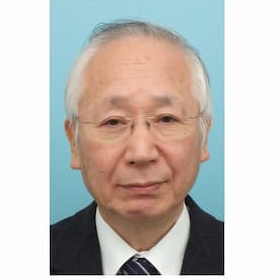Imaging Technologies for Understanding Material Appearance
A special issue of Journal of Imaging (ISSN 2313-433X).
Deadline for manuscript submissions: 31 May 2024 | Viewed by 7005
Special Issue Editors
2. Faulty of Business and Informatics, Nagano University, Nagano 386-0032, Japan
Interests: multispectral imaging; material appearance; HDR image analysis
Special Issues, Collections and Topics in MDPI journals
Interests: color engineering; image analysis; visual information processing; material appearance
Special Issues, Collections and Topics in MDPI journals
Special Issue Information
Dear Colleagues,
Material appearance information is a signature of quality and a criterion of object choice. Terms such as glossiness, matteness, transparency, and roughness are commonly used as the perceptual attributes of material appearance. This information not only helps us appreciate the beauty in life but also guides us to determine the value of its worth.
Material appearance has become a crucial research field in academia and industry in recent years. Consequently, interdisciplinary collaboration is often essential in material appearance research.
Furthermore, studying image information helps us to solve complex problems surpassing conventional image processing, analysis, and rendering. Material appearance study is interesting, as every object around us has a unique appearance of materials, whether natural or artificial. Therefore, the potential of material appearance study is unlimited. One example of material appearance research is studying how different types of objects interact with light and how their appearance changes under different lighting conditions. This research could include measuring properties such as reflectance, gloss, translucency, and texture to understand how they affect the way an object looks and feels. Today, material appearance research can be applied to design, engineering, psychology, physiology, medicine, rehabilitation, and many more.
This Special Issue, "Imaging Technologies for Understanding Material Appearance", aims to present the latest imaging technologies developed to understand material appearance and solve its many associated problems. All interested authors are invited to submit their latest results on material appearance research. All papers need to present original, previously unpublished work. Possible representative topics are shown in the keyword column below. All papers are welcome on any topics related to material appearance imaging technologies, not limited to the keywords.
Prof. Dr. Shoji Tominaga
Prof. Dr. Takahiko Horiuchi
Guest Editors
Manuscript Submission Information
Manuscripts should be submitted online at www.mdpi.com by registering and logging in to this website. Once you are registered, click here to go to the submission form. Manuscripts can be submitted until the deadline. All submissions that pass pre-check are peer-reviewed. Accepted papers will be published continuously in the journal (as soon as accepted) and will be listed together on the special issue website. Research articles, review articles as well as short communications are invited. For planned papers, a title and short abstract (about 100 words) can be sent to the Editorial Office for announcement on this website.
Submitted manuscripts should not have been published previously, nor be under consideration for publication elsewhere (except conference proceedings papers). All manuscripts are thoroughly refereed through a single-blind peer-review process. A guide for authors and other relevant information for submission of manuscripts is available on the Instructions for Authors page. Journal of Imaging is an international peer-reviewed open access monthly journal published by MDPI.
Please visit the Instructions for Authors page before submitting a manuscript. The Article Processing Charge (APC) for publication in this open access journal is 1800 CHF (Swiss Francs). Submitted papers should be well formatted and use good English. Authors may use MDPI's English editing service prior to publication or during author revisions.
Keywords
- measurement of material appearance
- image processing for material appearance
- image synthesis and rendering for material appearance
- material recognition and classification
- deep learning methods for material appearance
- appearance control and editing
- multi-spectral imaging for material appearance
- HDR imaging for material appearance
- perceptual attributes of material appearance
- multi-modal and cross-modal processing for material appearance
- application technologies on material app







